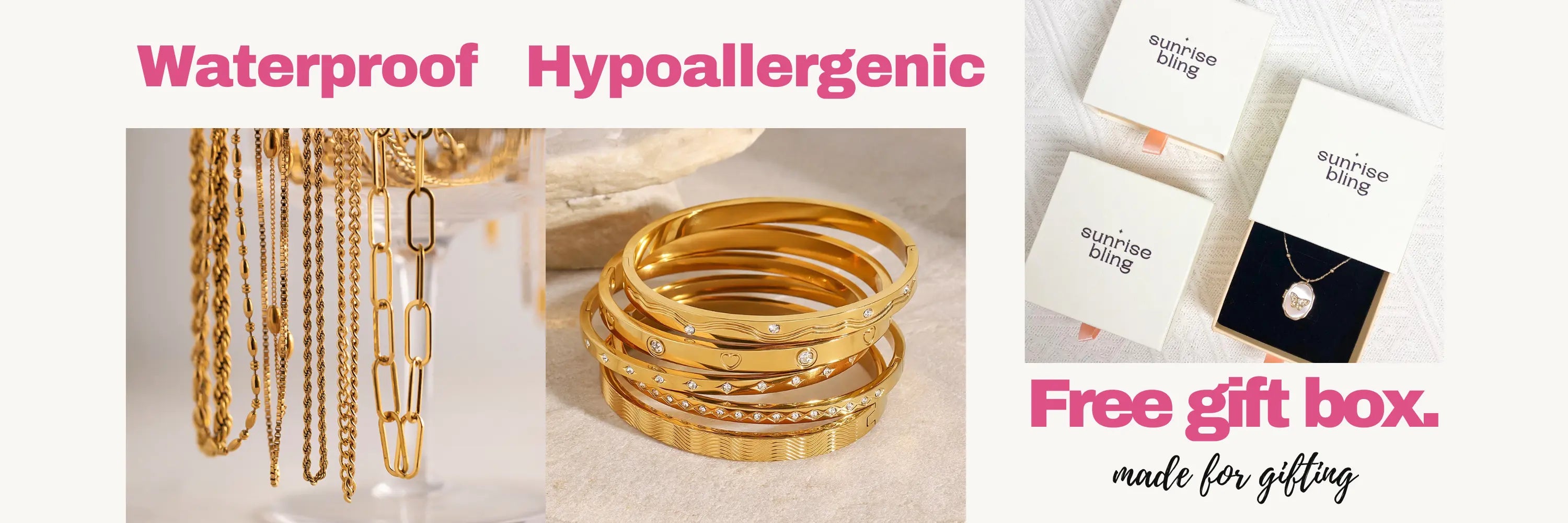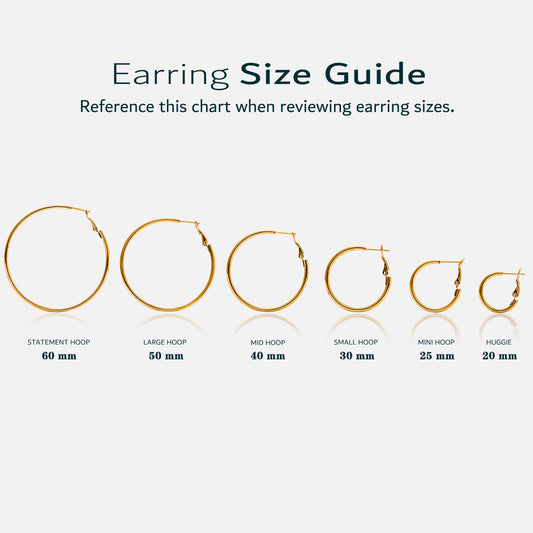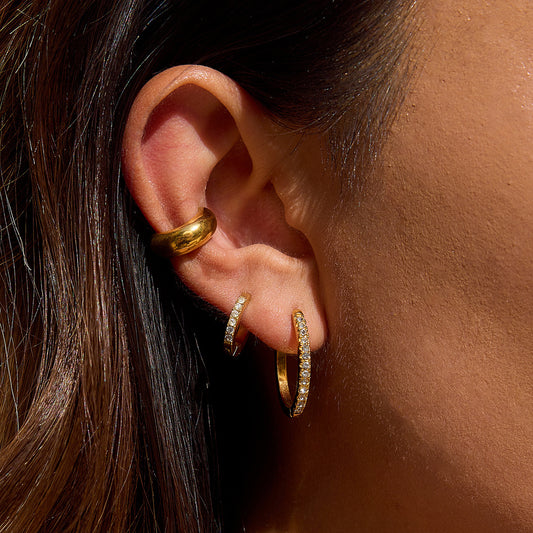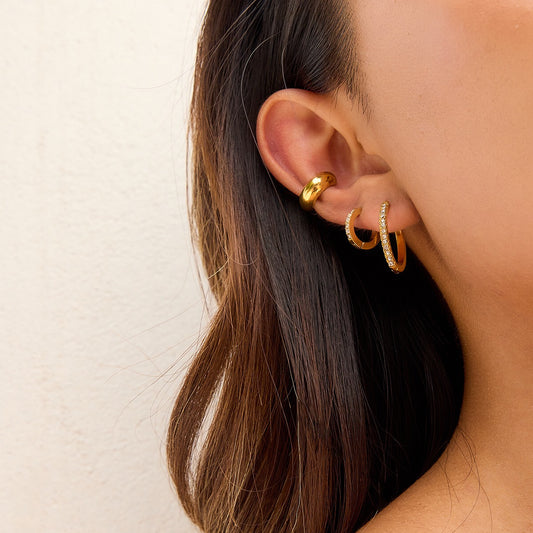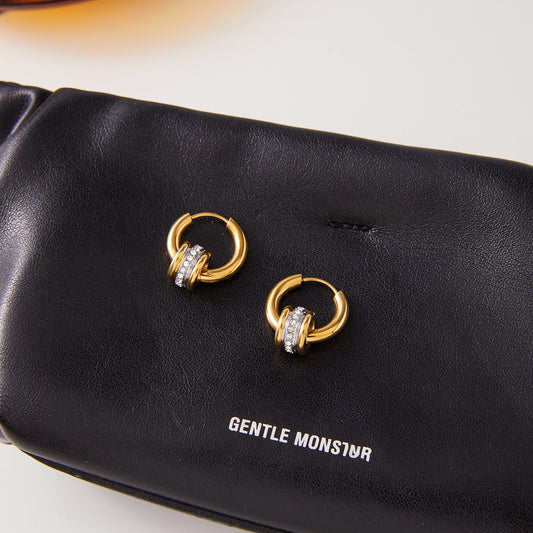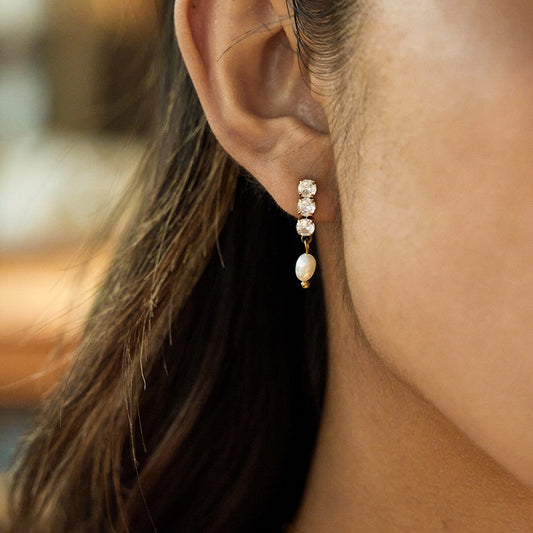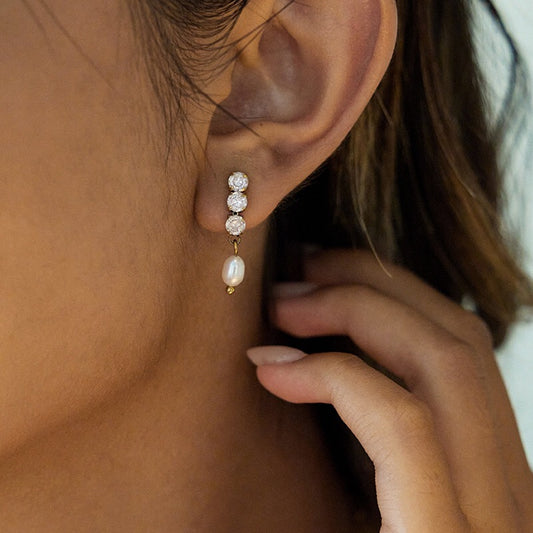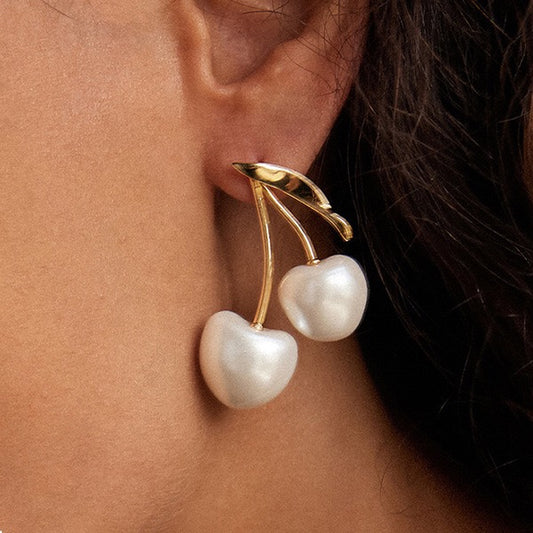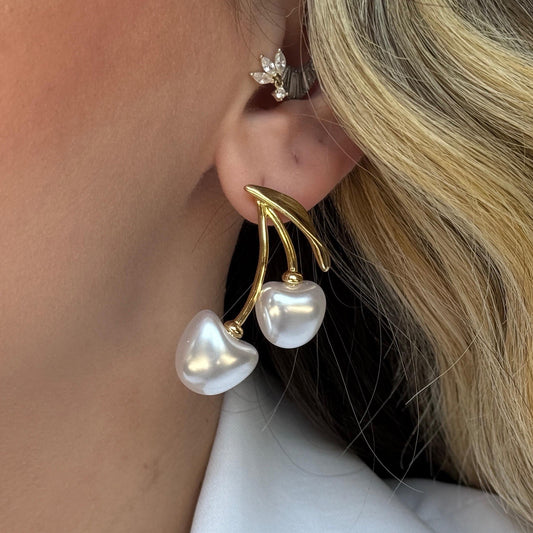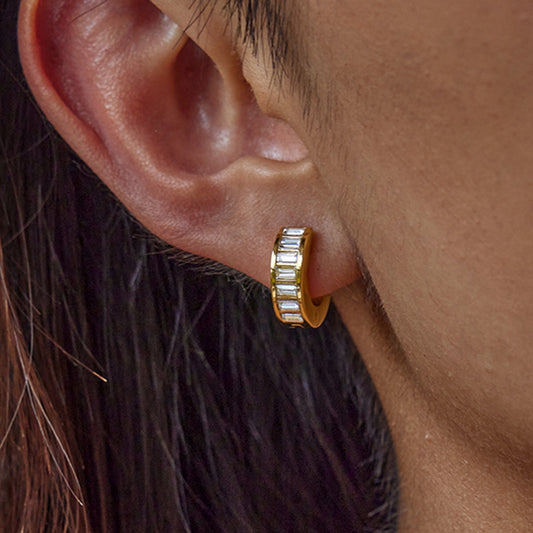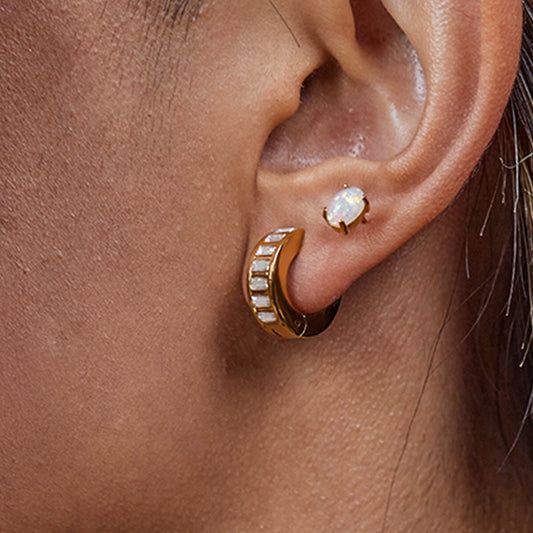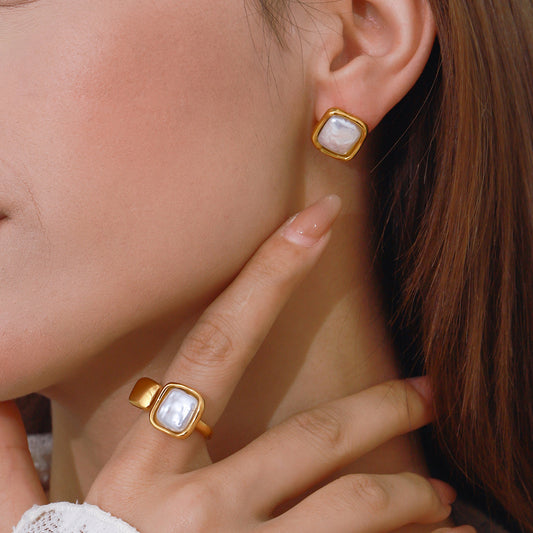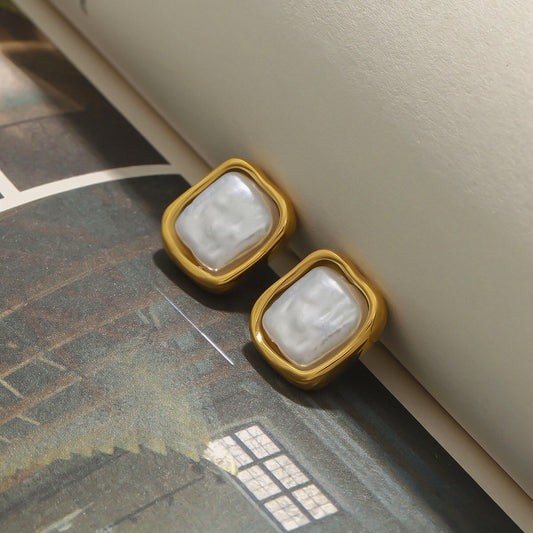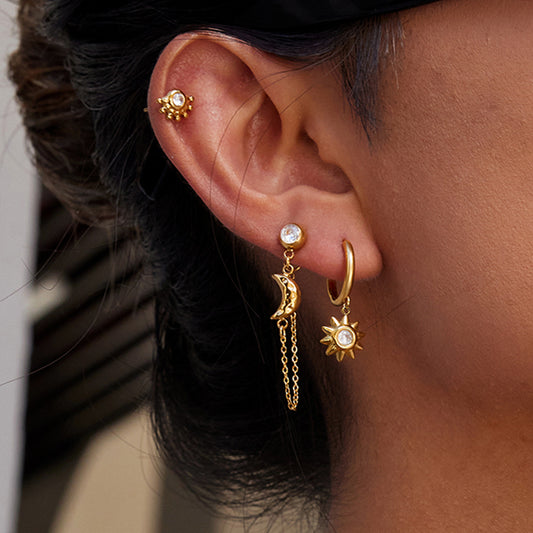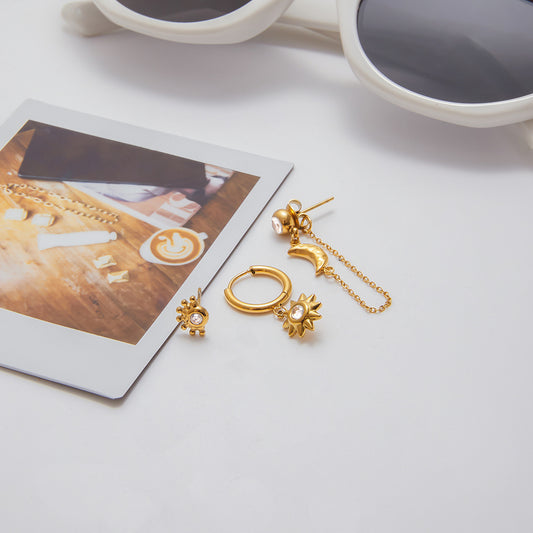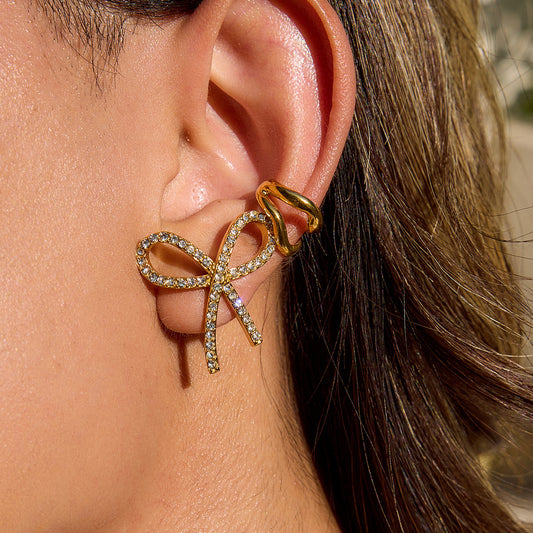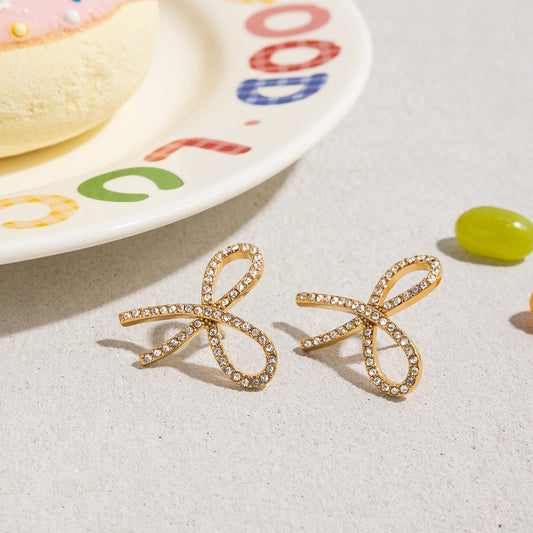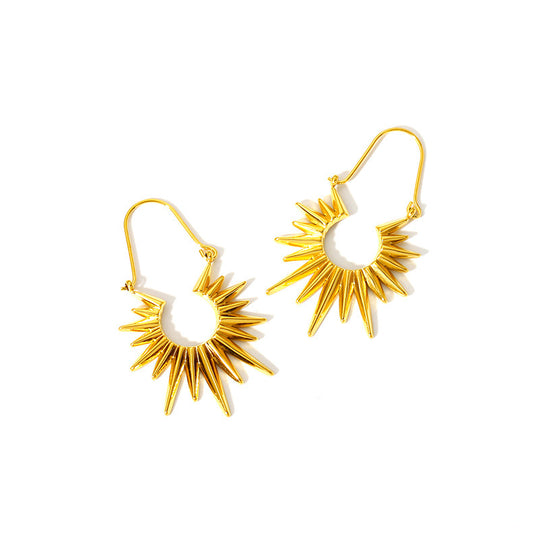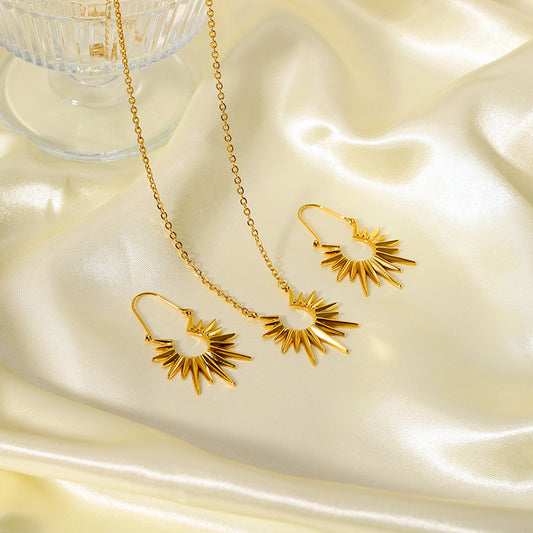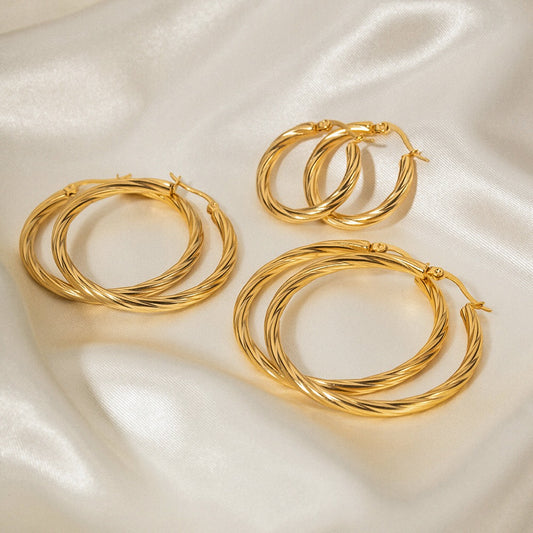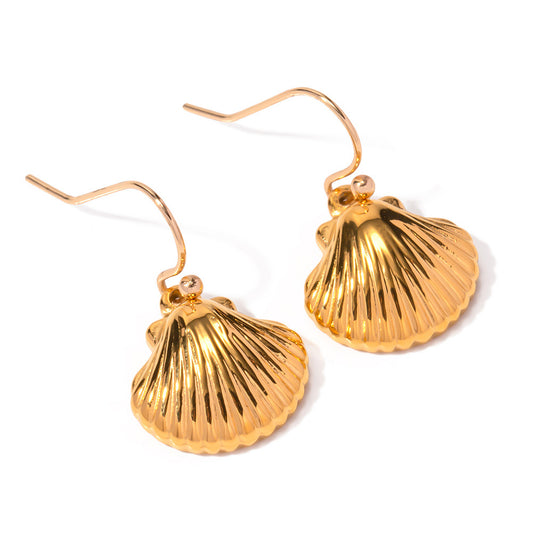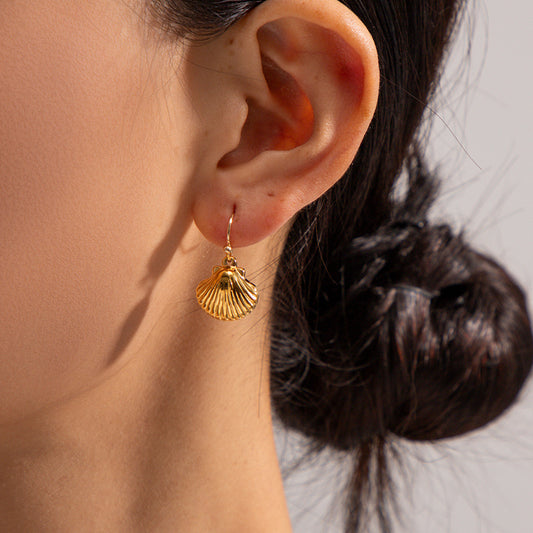Diamond Earrings Diamond—a pairing of luminous diamonds with versatile earring designs—has long been a cornerstone of fine jewelry, blending timeless elegance with modern versatility. The global diamond jewelry market size was estimated at USD 340.6 billion in 2022 and is expected to reach USD 353.2 billion in 2023. Unlike fleeting jewelry trends, diamond earrings retain their allure across decades: a simple pair of diamond studs can elevate a casual t-shirt, while bold diamond hoops add glamour to a formal gown. What makes them indispensable? Diamonds’ unmatched sparkle, combined with earring designs that suit every style and occasion, turns them into more than an accessory—they’re a symbol of celebration, love, and lasting luxury. This guide covers everything you need to know about Diamond Earrings Diamond, from their design to how to care for, style, and authenticate them.
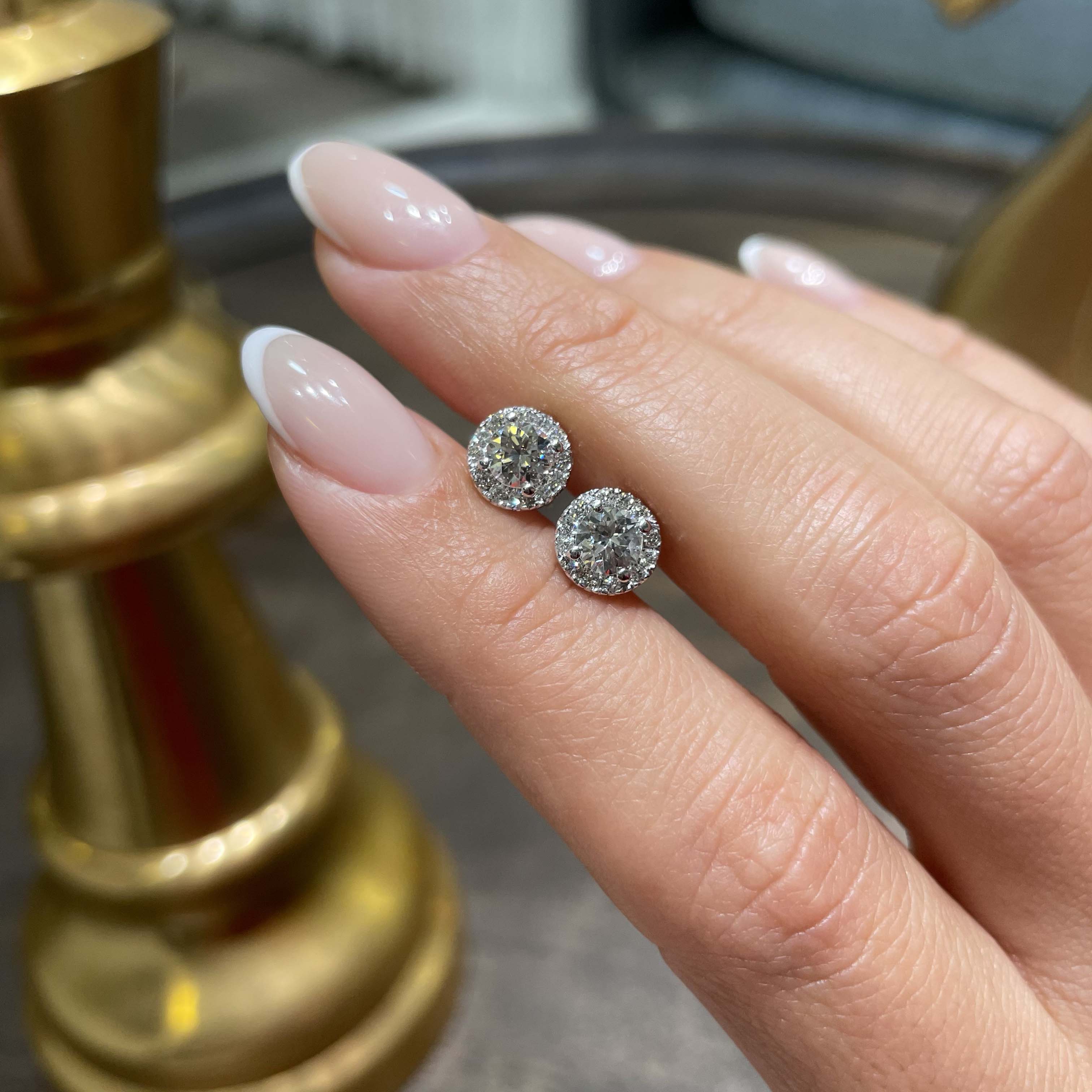
What Are Diamond Earrings Diamond?
Diamond Earrings Diamond refers to earring designs where diamonds are the central or accent gemstone, set in a metal band (typically gold, white gold, platinum, or silver) to create wearable jewelry. Unlike other gemstone earrings (e.g., sapphire or ruby), these pieces prioritize diamonds’ unique optical properties—their ability to reflect and refract light, creating the “sparkle” (called brilliance) that makes diamonds iconic.
At their core, Diamond Earrings Diamond are defined by two key elements: the diamond quality (determined by the 4Cs: Cut, Color, Clarity, Carat Weight) and the earring setting/design (which dictates how the diamond is held and the overall aesthetic). They range from minimalist studs (a single diamond per ear) to elaborate drops (diamonds cascading from a hoop or hook), ensuring there’s a style for every taste—from understated to bold.
Key Characteristics of Diamond Earrings Diamond
-
Diamond Quality (The 4Cs): The 4Cs determine a diamond’s beauty and value, and they vary widely across earrings:
-
Cut: The most important factor for sparkle—well-cut diamonds (e.g., “Excellent” or “Very Good” on GIA scales) reflect light optimally. For earrings, a “Good” cut is often sufficient (since they’re viewed from a distance), balancing sparkle and cost.
-
Color: Diamonds range from D (colorless, most valuable) to Z (light yellow/brown). For earrings, near-colorless (G–J) diamonds are popular—they appear white to the naked eye but cost less than D–F.
-
Clarity: Measures internal flaws (inclusions) and external blemishes. For earrings, SI1–SI2 (slightly included) clarities are ideal—flaws are invisible without magnification, but the diamond costs far less than VS or VVS grades.
-
Carat Weight: The size of the diamond (1 carat = 0.2 grams). Earrings often come in “total carat weight (TCW)” (e.g., 0.50 TCW = two 0.25-carat diamonds, one per ear) to simplify sizing.
-
Metal Settings: The metal holding the diamond impacts durability, style, and skin compatibility:
-
White Gold/Platinum: Enhance diamonds’ brightness (their cool tone makes diamonds appear whiter). Ideal for modern styles and cool-toned outfits.
-
Yellow Gold: Adds warmth, creating a classic, timeless look. Pairs beautifully with warm-toned skin and earthy outfits.
-
Rose Gold: A romantic, trendy option—its pink hue softens diamonds’ sparkle, perfect for delicate designs like studs or small hoops.
-
Sterling Silver: A budget-friendly alternative—less durable than gold/platinum but suitable for costume or everyday diamond earrings (often with smaller, simulated diamonds).
-
Earring Backs: The mechanism that secures the earring to the ear, impacting comfort and security:
-
Push-Back (Butterfly Back): The most common—small metal “butterfly” that slides onto a post. Easy to use but less secure for active wear.
-
Screw-Back: A metal backing that screws onto a threaded post. More secure than push-backs, ideal for valuable diamond earrings or children’s styles.
-
Latch-Back: A hinged backing that snaps closed. Secure and easy to use, popular for hoops or drop earrings.
How Diamond Earrings Diamond Differ from Other Earrings
-
Durability: Diamonds are the hardest natural material (10 on the Mohs scale), so diamond earrings resist scratches and damage better than earrings with softer gemstones (e.g., pearls, opals).
-
Value Retention: Diamond earrings hold their value over time—unlike costume jewelry, fine diamond earrings (set in gold/platinum) can be resold or passed down as heirlooms.
-
Versatility: Their sparkle works for every occasion—diamond studs are as appropriate for a work meeting as they are for a wedding, while diamond hoops transition from brunch to date night seamlessly.

Why Are Diamond Earrings Diamond So Popular?
Diamond Earrings Diamond have remained a jewelry staple for decades because they solve a unique style need: they offer unmatched sparkle, timelessness, and versatility—appealing to everyone from busy professionals to brides-to-be. Their popularity spans ages, styles, and cultures, and it’s rooted in several key factors:
Unmatched Sparkle That Grabs Attention
Diamonds’ ability to reflect light (called brilliance) and disperse it into rainbow hues (called fire) is unmatched by any other gemstone. Even small diamonds (0.10–0.25 carats) catch the light, adding a subtle glow to the face—this “instant brightness” makes diamond earrings flattering for all skin tones and facial shapes. Unlike colored gemstones (which can clash with outfits), diamonds’ neutral sparkle complements every color, from bold reds to soft pastels.
Timeless Style That Never Goes Out of Fashion
Trends come and go—think oversized plastic hoops or neon acrylic studs—but diamond earrings remain relevant. A pair of diamond studs purchased in 2004 will look just as elegant in 2024; a diamond drop earring set will still feel luxurious at a 2034 anniversary dinner. This timelessness makes them a smart investment: you won’t need to replace them as styles change, and they can be passed down to daughters or granddaughters as meaningful heirlooms.
Versatility for Every Occasion
Diamond earrings are the ultimate “one-size-fits-all” accessory—they work for every moment:
-
Everyday Casual: Small diamond studs (0.25 TCW) pair with jeans, t-shirts, and sneakers, adding a touch of “everyday luxury” without feeling over-the-top.
-
Work/Professional: Medium diamond hoops (1–2 inches) or simple drop earrings complement blazers and button-downs—polished enough for meetings but not distracting.
-
Formal Events: Large diamond studs (1+ TCW) or elaborate drop earrings (with multiple diamonds) elevate gowns, tuxedos, or cocktail dresses—perfect for weddings, galas, or red-carpet moments.
-
Milestones: They’re the go-to gift for life’s big moments—birthdays, anniversaries, promotions, or the birth of a child—making them a symbol of celebration and love.

Sentimental Value That Grows Over Time
Diamond earrings often carry emotional weight: they’re gifted to mark important moments (e.g., a husband gifting diamond hoops for a 10th anniversary) or inherited from loved ones (e.g., a mother passing down her wedding diamond studs). Every time you wear them, you’re reminded of the person who gave them to you or the moment they commemorated—turning a piece of jewelry into a wearable memory.
Accessibility for Every Budget
While luxury diamond earrings (set in platinum with large diamonds) can cost thousands, there are options for every budget:
-
Budget-Friendly: Small diamond studs (0.10–0.25 TCW) set in sterling silver or 10k gold—\(150–\)500.
-
Mid-Range: Medium studs or small hoops (0.50–1.00 TCW) set in 14k gold—\(500–\)2,000.
-
Luxury: Large studs, drop earrings, or hoops (1.00+ TCW) set in 18k gold or platinum—\(2,000–\)10,000+.
This range means anyone can own a pair of diamond earrings, whether they’re buying their first set or investing in a heirloom piece.
Popular Styles of Diamond Earrings Diamond
Diamond Earrings Diamond come in a variety of designs, each tailored to different tastes and occasions. Below are the most in-demand styles, from minimalist to bold:
Diamond Stud Earrings (Everyday Essential)
The most popular style—simple, versatile, and timeless:
-
Design: A single diamond per ear, set in a small metal post (push-back or screw-back). The diamond is usually round (the most brilliant cut) but can also be princess (square) or cushion (soft square) shaped.
-
Best For: Everyday wear, work, or casual outings. Ideal for anyone new to diamond earrings or those who prefer minimalist style.
-
Popular Specifications: 0.25–1.00 TCW, round-cut diamonds (G–J color, SI1–SI2 clarity), set in 14k white gold or yellow gold.
-
Why It’s Popular: Its simplicity makes it a staple—works with every outfit, from yoga pants to a wedding dress. It’s also the most affordable fine diamond earring style, making it accessible to most shoppers.

Diamond Hoop Earrings (Casual to Glamorous)
A versatile style that ranges from delicate to bold:
-
Design: A circular or semi-circular hoop with diamonds set along the outer edge (or, for “inside-out hoops,” along the inner edge). Sizes vary from small (0.5 inches) to large (3+ inches).
-
Best For: Casual wear (small hoops) or formal events (large hoops). Popular with women who want a balance of sparkle and edge.
-
Popular Specifications: 0.50–2.00 TCW, round-cut diamonds, set in 14k white gold (small hoops) or 18k yellow gold (large hoops). Latch-back or hinge closures for security.
-
Why It’s Popular: Hoops add movement and glamour without being overly flashy. Small diamond hoops are perfect for brunch or errands, while large hoops make a statement at parties or date nights.
Diamond Drop Earrings (Formal & Romantic)
An elegant style that adds length and drama to the face:
-
Design: A diamond (or cluster of diamonds) suspended from a post or hook, creating a “drop” effect. Lengths range from short (1 inch) to long (3+ inches).
-
Best For: Formal events (weddings, galas, proms) or romantic occasions (anniversaries, date nights). Popular with brides or anyone wanting a red-carpet-worthy look.
-
Popular Specifications: 1.00–3.00 TCW, pear-cut or marquise-cut diamonds (which elongate the face), set in 18k white gold or platinum. Screw-back or lever-back closures for security.
-
Why It’s Popular: The drop design draws attention to the neck and collarbone, making it flattering for all necklines (especially V-necks or strapless gowns). The movement of the diamond adds extra sparkle as you move.
Diamond Cluster Earrings (Delicate & Sparkly)
A feminine style that uses multiple small diamonds to create a “cluster” effect:
-
Design: A central small diamond surrounded by even smaller diamonds (called “melee diamonds”), creating the illusion of a larger, more sparkly gemstone. Often shaped like flowers, hearts, or rounds.
-
Best For: Semi-formal events (brunches, baby showers) or everyday wear (small clusters). Popular with women who love delicate, romantic jewelry.
-
Popular Specifications: 0.30–0.75 TCW (total of all diamonds), round-cut melee diamonds, set in 14k rose gold or white gold. Push-back closures.
-
Why It’s Popular: The cluster design maximizes sparkle without the cost of a single large diamond. It’s also more unique than plain studs, adding a subtle “wow” factor to casual or semi-formal looks.
Diamond Huggie Earrings (Miniature Hoops with Sparkle)
A trendy, comfortable style that “hugs” the earlobe:
-
Design: Small, thick hoops (usually 0.5–1 inch in diameter) with diamonds set along the outer edge. They sit close to the earlobe, creating a sleek, modern look.
-
Best For: Everyday wear or casual outings. Popular with busy professionals or anyone who finds large hoops uncomfortable.
-
Popular Specifications: 0.25–0.50 TCW, round-cut diamonds, set in 14k white gold or platinum. Latch-back closures for easy on/off.
-
Why It’s Popular: They offer the “hoop look” without the weight or movement of large hoops. They’re also secure—ideal for active lifestyles (working out, chasing kids) since they don’t catch on clothing.
How to Wear Diamond Earrings Diamond
Wearing Diamond Earrings Diamond is easy—their versatility lets you style them for any look, from minimalist to bold. Below are tips for different occasions, face shapes, and outfit styles:

Styling for Different Occasions
-
Everyday Casual:
-
Small Diamond Studs (0.25 TCW): Pair with a white t-shirt, high-waisted jeans, and sneakers. Add a thin gold necklace for a cohesive look. Perfect for running errands, coffee dates, or work-from-home days.
-
Mini Diamond Huggies: Wear with a hoodie, leggings, and ankle boots. The huggies add subtle sparkle without feeling dressy, making them ideal for casual weekends.
-
Work/Professional:
-
Medium Diamond Studs (0.50 TCW): Pair with a blazer, button-down shirt, and tailored trousers. Keep other jewelry minimal (small stud necklace, thin watch) to avoid distraction. Great for client meetings or presentations.
-
Small Diamond Hoops (1 inch): Wear with a sheath dress or pencil skirt. The hoops add personality without being unprofessional—perfect for creative workplaces or casual office environments.
-
Formal Events:
-
Large Diamond Studs (1.00+ TCW): Pair with a strapless gown or tuxedo. Let the earrings be the focal point—skip a necklace and opt for a simple bracelet instead. Ideal for weddings, galas, or red-carpet events.
-
Diamond Drop Earrings: Wear with a V-neck or sweetheart-neck gown. The drop design complements the neckline, and the diamonds’ sparkle catches the light under formal lighting. Perfect for prom or anniversary dinners.
Styling for Different Face Shapes
-
Round Faces: Choose diamond drop earrings or long, thin hoops—they elongate the face, balancing its roundness. Avoid large, circular hoops, which can make the face look wider.
-
Oval Faces: Lucky—any diamond earring style works! Try diamond studs for everyday, hoops for casual, and drop earrings for formal events.
-
Square Faces: Opt for soft, curved styles like round diamond studs or oval hoops—they soften the face’s sharp angles. Avoid square or angular designs (e.g., princess-cut studs in a square setting).
-
Heart-Shaped Faces: Choose diamond earrings that are wider at the bottom (e.g., teardrop-shaped drop earrings or large hoops)—they balance the face’s narrow chin. Avoid small studs that emphasize the forehead.
Styling with Other Jewelry
-
Minimalist Look: Wear diamond studs or small huggies with a thin gold or silver necklace (e.g., a tiny initial pendant). Keep bracelets and rings simple (1–2 thin bands) to avoid clutter.
-
Layered Look: Pair diamond hoops with a layered necklace set (short choker + longer pendant). Add a stack of thin bracelets for extra texture. This look is perfect for casual outings or brunch with friends.
-
Formal Look: Wear diamond drop earrings with a statement bracelet (e.g., a diamond tennis bracelet) and a simple ring (1 small diamond band). Skip a necklace if the dress has a high neckline—let the earrings shine.
Diamond Earrings Diamond: Perfect Gift for Your Wife
A pair of Diamond Earrings Diamond is one of the most thoughtful, meaningful gifts you can give your wife—it’s a symbol of your love, appreciation, and commitment, and it’s something she’ll wear and cherish for years. Unlike fleeting gifts (flowers, chocolates), diamond earrings are a lasting reminder of your relationship, perfect for anniversaries, birthdays, or “just because” moments.
Why It Resonates as a Wife’s Gift
-
Sentiment That Lasts: Diamond earrings mark milestones—whether it’s your 5th anniversary (wood is the traditional gift, but diamond earrings add luxury) or the birth of your first child. Every time she wears them, she’ll think of the moment you gave them to her.
-
Reflects Her Style: You can choose a style that matches her personality—minimalist studs if she’s low-key, bold hoops if she loves glamour, or romantic drop earrings if she’s sentimental. This shows you pay
attention to her preferences, making the gift feel personal, not generic.
-
Versatility for Her Life: She’ll wear them everywhere—from dropping the kids at school to your anniversary dinner. Unlike a dress that fits one occasion, diamond earrings fit her busy, multifaceted life.
Top Diamond Earrings Diamond Gifts for Your Wife
-
14k White Gold Diamond Studs (0.50 TCW): A classic choice—round-cut diamonds (G–H color, SI1 clarity) set in a simple four-prong setting. They’re versatile enough for everyday wear but sparkly enough for special moments. Pair with a handwritten note about why you chose studs (e.g., “They remind me of your quiet, constant sparkle”).
-
14k Rose Gold Diamond Huggies (0.30 TCW): Perfect for wives who love trendy, comfortable jewelry. The rose gold adds warmth, and the huggie design stays secure during busy days. Ideal if she prefers subtlety over bold pieces.
-
18k Yellow Gold Diamond Drop Earrings (1.00 TCW): A luxury gift for milestones (10th anniversary, big promotion). Pear-cut diamonds suspend from small gold hooks, adding elegance to formal outfits. They’re a splurge that feels indulgent but timeless.
Tips for Choosing the Right Pair
-
Consider Her Daily Routine: If she’s active (yoga, gardening), opt for secure backings (screw-backs or latch-backs) and smaller diamonds (less likely to catch on clothing). If she works in an office, larger studs or hoops are a great fit.
-
Match Her Metal Preference: Check her jewelry box—if she wears mostly white gold, stick to white gold; if she loves yellow gold, choose that. If she mixes metals, rose gold is a safe, complementary option.
-
Add a Personal Touch: Engrave the earring posts with a meaningful date (your wedding day, kids’ birthdays) or a tiny initial. Most jewelers offer this service for \(20–\)50, turning a beautiful gift into a keepsake.
How to Clean Diamond Earrings Diamond
Diamonds attract dirt, oils, and makeup over time—this buildup dulls their sparkle, making even the most beautiful earrings look lackluster. Regular cleaning keeps diamond earrings bright and preserves their setting (preventing prongs from loosening). The process is simple and uses household or jewelry-specific supplies.
Daily Care to Prevent Buildup
-
Wipe After Wear: Use a soft, dry microfiber cloth to gently wipe the diamonds and setting every night. This removes skin oils and makeup before they harden on the surface.
-
Remove Before High-Risk Activities: Take off diamond earrings before applying perfume, hairspray, or lotion (chemicals can coat diamonds), swimming (chlorine damages metal settings), or cooking (grease clings to diamonds).
-
Store Safely: Keep earrings in a padded jewelry box or soft pouch, separated from other jewelry (to avoid scratching the metal or diamonds). For studs, store the backs with the earrings to avoid losing them.
Step-by-Step Deep Cleaning Process
Deep clean diamond earrings every 2–3 weeks (or more often if worn daily):
-
Mix a Gentle Solution: In a small bowl, combine 1 cup warm (not hot) water with 1–2 drops of mild dish soap (like Dawn) or a diamond-specific cleaner (e.g., Connoisseurs Diamond Cleaner). Hot water can damage metal settings, so stick to warm.
-
Soak the Earrings: Place the earrings in the solution and let them soak for 15–20 minutes. This loosens dirt trapped in prongs, behind diamonds, or in hoop crevices.
-
Scrub Gently: Use a soft-bristled toothbrush (designated for jewelry—child-sized brushes work best) to clean:
-
Diamonds: Scrub the front, back, and sides of each diamond in circular motions. Focus on the area where the diamond meets the prong—dirt here dulls sparkle the most.
-
Settings: Clean the metal setting and backings to remove skin oils. For hoops, scrub the inner and outer edges to remove buildup.
-
Rinse & Dry: Hold the earrings under warm running water to remove soap residue. Pat them dry immediately with a lint-free microfiber cloth. For extra shine, gently buff the diamonds with the cloth in light, circular motions.
-
Check Prongs (Optional): After cleaning, inspect the prongs to ensure they’re tight (loose prongs can cause diamonds to fall out). If a prong feels wobbly, take the earrings to a jeweler for repair.
How to Wash Diamond Earrings
“Washing” diamond earrings is essentially the same as deep cleaning—just a simpler, more casual term for removing dirt and buildup. The key is to use gentle, non-abrasive methods to avoid damaging diamonds or settings. Here’s a quick, no-fuss way to wash them:
Quick Wash for Daily Maintenance
-
Gather Supplies: A small bowl of warm water, a drop of mild soap, and a soft cloth.
-
Dampen the Cloth: Dip the cloth in the soapy water, wring out excess moisture (it should be slightly damp, not soaking).
-
Wipe the Earrings: Gently wipe the diamonds and setting with the cloth. For hard-to-reach areas (like between prongs), use the edge of the cloth or a cotton swab dipped in soapy water.
-
Rinse (If Needed): If soap residue remains, rinse the earrings quickly under warm water, then pat dry.
When to Avoid “Washing”
-
Avoid Submerging Delicate Settings: If earrings have intricate designs (e.g., cluster earrings with tiny melee diamonds) or porous metals (like sterling silver), skip soaking—use a damp cloth instead to prevent water damage.
-
Skip Harsh Cleaners: Never use window cleaner, ammonia, or bleach—these chemicals can etch diamond surfaces (yes, even diamonds can be damaged!) and discolor metal settings.
How Much Are Diamond Earrings?
The cost of diamond earrings varies drastically—from \(150 for a small, budget-friendly pair to \)10,000+ for luxury designs. The price depends on four core factors: diamond quality (4Cs), metal type, earring style, and brand. Below is a detailed breakdown to help you budget:
Price Ranges by Diamond Quality (TCW)
-
Budget-Friendly (0.10–0.25 TCW):
-
Diamonds: Round-cut, I–J color, SI2–I1 clarity (flaws visible under magnification but not to the naked eye).
-
Metal: Sterling silver or 10k gold.
-
Styles: Studs or tiny huggies.
-
Price: \(150–\)500.
-
Mid-Range (0.30–1.00 TCW):
-
Diamonds: Round or princess-cut, G–H color, SI1 clarity (near-colorless, no visible flaws).
-
Metal: 14k gold (white, yellow, or rose).
-
Styles: Studs, medium hoops, or small drops.
-
Price: \(500–\)2,500.
-
Luxury (1.00+ TCW):
-
Diamonds: Round, pear, or marquise-cut, D–F color, VS2–VVS1 clarity (colorless, virtually flawless).
-
Metal: 18k gold or platinum.
-
Styles: Large studs, elaborate drops, or diamond-encrusted hoops.
-
Price: \(2,500–\)15,000+.
Additional Cost Factors
-
Brand Premium: Luxury brands (e.g., Tiffany, Cartier) charge 30–50% more for their name and craftsmanship. A Tiffany 0.50 TCW diamond stud set costs ~\(2,000, while a non-branded equivalent is ~\)800.
-
Setting Complexity: Intricate settings (e.g., cluster earrings with multiple melee diamonds) cost more than simple four-prong studs—extra labor adds \(100–\)500.
-
Lab-Grown vs. Natural Diamonds: Lab-grown diamonds are 30–50% cheaper than natural diamonds of the same quality. A 0.50 TCW lab-grown diamond stud set costs ~\(400, vs. \)800 for natural.
How to Tell If Diamond Earrings Are Real
Fake diamond earrings (often made with cubic zirconia, moissanite, or glass) are common—here are simple, at-home tests to verify authenticity, plus professional methods for certainty:
At-Home Tests
-
The Sparkle Test: Real diamonds reflect white light and disperse rainbow hues (fire) evenly. Fake diamonds (like cubic zirconia) often have too much “rainbow” sparkle or look dull. Hold the earrings under a light—real diamonds will have a balanced mix of white and colored sparkle.
-
The Fog Test: Breathe on the diamond to create fog. Real diamonds disperse heat quickly, so the fog will disappear in 1–2 seconds. Fake diamonds hold fog for 3–5 seconds (they’re less thermally conductive).
-
The Water Test: Fill a glass with water and drop the earrings in (remove backs first). Real diamonds are dense, so they’ll sink to the bottom. Fake diamonds (less dense) will float or sink slowly.
-
The Newspaper Test: Place the diamond face-down on a newspaper. Real diamonds bend light, so you won’t be able to read the text through the stone. Fake diamonds are more transparent—you may see blurry text.
Professional Verification
For valuable earrings (1.00+ TCW), get a professional appraisal to confirm authenticity:
-
Gemological Certificate: Reputable jewelers provide certificates from labs like GIA (Gemological Institute of America) or AGS (American Gem Society). The certificate lists the diamond’s 4Cs and confirms it’s natural.
-
Acid Test: Jewelers use a nitric acid solution to test the metal setting—real gold/platinum won’t react, while fake metals (like brass) will discolor.
-
Loupe Inspection: A jeweler will use a 10x loupe (magnifying glass) to check for natural inclusions (real diamonds have them) or man-made flaws (fake diamonds often have none).
Frequently Asked Questions About Diamond Earrings Diamond
Q: Can I wear diamond earrings every day?
A: Yes—diamonds are durable (10 on the Mohs scale) and can withstand daily wear. Just follow these rules:
-
Choose secure backings (screw-backs or latch-backs) to avoid losing them.
-
Clean them weekly to remove buildup.
-
Avoid wearing them during high-impact activities (e.g., weightlifting) that could bend prongs.
Many people wear small diamond studs daily for years without damage—they’re one of the most low-maintenance fine jewelry pieces.
Q: Do diamond earrings lose value over time?
A: No—fine diamond earrings (natural diamonds set in gold/platinum) retain their value over time. Factors that preserve value:
-
Natural diamonds (lab-grown diamonds hold value but less than natural).
-
High-quality 4Cs (G–H color, SI1 clarity, Good cut or better).
-
Solid metal settings (14k+ gold, platinum).
Costume diamond earrings (cubic zirconia in silver-plated metal) will lose value—they’re considered disposable.
To maintain value, keep the original receipt and gemological certificate (if applicable). You can resell fine diamond earrings for 50–70% of their original price (more for rare or branded pieces).
Q: Are lab-grown diamond earrings a good alternative to natural diamonds?
A: Yes—lab-grown diamonds are chemically identical to natural diamonds (same sparkle, hardness, and durability) but cost 30–50% less. They’re also more eco-friendly (no mining) and ethically sourced.
Lab-grown diamond earrings are a great choice if:
-
You want the look of natural diamonds on a budget.
-
You prioritize sustainability.
-
You don’t need the “investment” value of natural diamonds (lab-grown hold value but not as much).
Just ensure the jeweler clearly labels them as “lab-grown”—reputable brands like Brilliant Earth or Clean Origin do this.
Q: How do I fix a loose diamond in my earring?
A: Never try to fix it yourself—loose prongs need professional repair to avoid losing the diamond. Here’s what to do:
-
Stop wearing the earring immediately (store it in a pouch to prevent the diamond from falling out).
-
Take it to a trusted jeweler—they’ll tighten the prongs or replace them if they’re bent.
-
Ask for a “prong check” while you’re there—most jewelers do this for free and can spot other loose prongs.
Repair costs range from \(30–\)100, depending on how many prongs need fixing.
Q: Can I resize diamond earrings?
A: No—earrings don’t have a “size” like rings or necklaces. But you can adjust their fit in other ways:
-
Backs: If the post is too long, ask a jeweler to trim it (cost: \(20–\)40). For loose fits, use silicone earring backs (available at drugstores for \(5–\)10) to secure the earring to the earlobe.
-
Hoops: Smaller hoops can’t be made larger, but larger hoops may be resized by a jeweler (they’ll cut the hoop and reattach it)—cost: \(50–\)150 (only for solid metal hoops, not diamond-encrusted ones).
Conclusion: Diamond Earrings Diamond—Delicate to Bold Sparkle
Diamond Earrings Diamond are more than just jewelry—they’re a celebration of life’s moments, a reflection of personal style, and a lasting investment in beauty. Whether you’re gifting a pair of studs to your wife for your anniversary, wearing hoops to a casual brunch, or passing down drop earrings to your daughter, they carry meaning that transcends trends. Their durability, versatility, and unmatched sparkle make them a staple that will stay with you for decades.
Now that you know how to choose, clean, and authenticate diamond earrings, it’s time to find the perfect pair for yourself or a loved one. Browse our curated collection of Diamond Earrings Diamond—from minimalist studs to glamorous drops—and use code DIAMOND20 to get 20% off your first order. Whether you’re looking for everyday luxury or a milestone gift, these earrings will add delicate (or bold!) sparkle to every moment. Shop now and let your diamond earrings shine as bright as the memories they’ll help you create.


